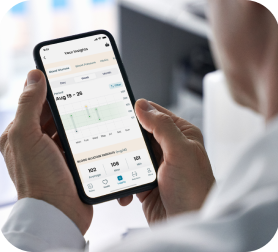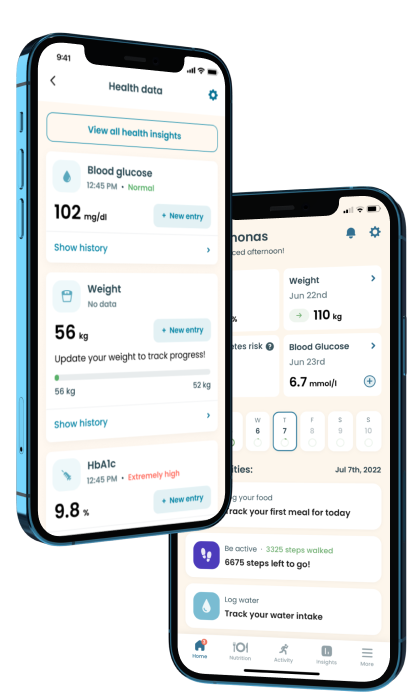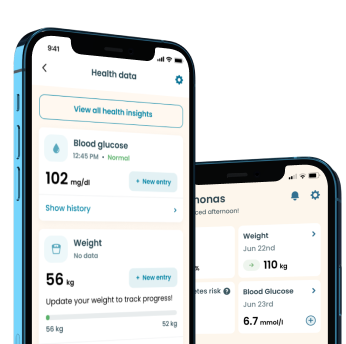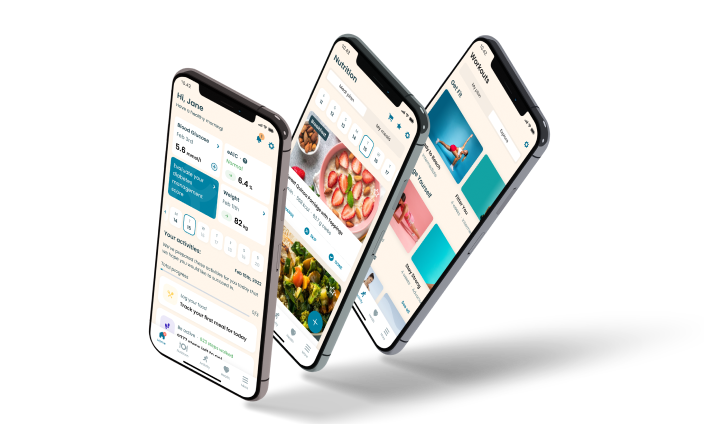Polenta and Diabetes: A Beneficial Food Option for Diabetics?

It's ok
69
373 kcal
People with diabetes are often considerate about their foods, as blood sugar control is extremely important. The American Diabetes Association and other expert diabetes institutions usually suggest the best foods for diabetics—to help regulate and control blood sugar—to be those low in glycemic index and glycemic load. One of such foods is polenta.
When people think of cooked grain foods, especially those meant for diabetics, popular variations such as oatmeal and quinoa come to mind. However, one common food that most diabetics barely consider is polenta.
Polenta is cooked cornmeal that experts consider diabetes-friendly due to its nutritional composition. The base ingredient is corn which is generally categorized as a healthy diet for diabetics. This article considers polenta as a meal, its relationship with diabetes, and whether it's an excellent food choice for blood glucose control.
Nutritional value
- Protein 8.1 g
- Carbohydrate 77 g
- Fat 3.6 g
- Fiber 7.3 g
- Sugar 0.6 g
- Cholesterol 0 g
What Is Polenta?
Polenta is a meal derived from cornmeal [a ground product of corn and is either ground coarsely or thoroughly (though not as fine as flour)]. Cornmeal can be used to form several foods and becomes polenta when cooked. After cooking, you can eat this mean as baked polenta or fried polenta.
When coarsely ground, cornmeal yields a firm and coarse polenta on cooking. On the other hand, a finer grind results in a soft and creamy polenta.
Polenta is a major dish in Europe and North America. It’s historically a staple meal from Northern Italy that almost anyone can enjoy irrespective of their financial class. Its easy preparation process and inexpensive ingredients made it more popular and has since been accepted by many western countries.
While polenta is well known among Americans, it’s not as popular as other grain foods. As such, you may not run into people cooking cornmeal for the sole purpose of having baked or fried polenta. This seemingly lesser popularity associated with polenta compared to other staple meals usually makes its clinical nutrition benefits less mainstream.
In terms of taste, polenta is a tasty dish and can have a salty undertone cooked with salty water. You can’t get a quick-cooking polenta meal as it takes quite some time to cook. After cooking, the polenta forms a creamy sticky substance and usually solidifies as it cools to form baked polenta.
You can make polenta from different cereal sources. While the most popular is yellow maize—responsible for the popular yellow of most polenta—other great cereals include white maize, buckwheat, or a mixture of these three grains. These variations have similar nutritional values and may only minutely differ in taste.
Take a quiz
Discover what Klinio app can do for you
Healthy diabetes meal plan crafted just for YOU

Personalized workouts with no equipment needed

Track your progress with smart tracking tools

Polenta Nutrition Facts: Processed Polenta vs. Fresh Home-Made Polenta
Polenta nutrition facts are one of the best ways to help people with diabetes know if their food contains healthy fats that could help them lose weight. While it’s true that polenta is high in carbs, its calorie count is pretty decent.
That said, if you cook polenta without spicing with cream or cheese, the calorie level would be no different from most fruits, which is a great option for blood sugar levels.
Below is the nutritional value of a properly cooked polenta (3/4 cup):
- Calories: 80
- Carbs: 17 grams
- Protein: 2 grams
- Fat: Below 1 gram
- Fiber: 1 gram
If you’re looking to eat polenta, you’re more likely to make use of the easily accessible and already processed polenta than having to cook the cornmeal from scratch. Cooking the cornmeal right from the start is usually more beneficial if you struggle with diabetes. This is because it’s still a whole grain.
On the other hand, processed polentas are mostly degerminated. While they have similar nutritional value with homemade cornmeal, they do lack in certain areas.
A degerminated corn is one devoid of its innermost kernel. The innermost kernel is termed the germ and contains healthy fats, vitamin E, and vitamin B. Although they offer tremendous benefits, if left intact in processed polenta, it reduces its shelf life — this explains why it’s often excluded.
Manufacturers, therefore, sacrifice nutrients for longevity, and such processed polenta is a tad less nutritious than whole cornmeal. Sadly, the removed part does play a great role in diabetes management.
Whole grain, or fresh cornmeal polenta, is not only high in vitamins and healthy fats but also has a relatively high fiber content. Some processed polenta may be whole grain, so you should try to check packages when buying to see if you’ll find the ‘Whole Grain’ stamp.
You should be careful about false claims, though, as manufacturers use this common trick to entice customers, and it’s not exactly illegal. The best way to ensure the package you’ve gotten is whole grain is to check if such is written in the ingredients and whether the product is FDA approved.
How Does Polenta Help With Diabetes?
Polenta is diabetes-friendly, making it one of the common foods doctors may suggest for people with diabetes. As can be seen from its nutritional values, the food’s makeup doesn’t necessarily increase blood sugar. Generally, cornmeal doesn’t have an outstanding nutritional value, but it can quickly change if mixed with milk, olive oil, cheese, and other nutrients.
You should be careful, though, as some nourishing additions could also potentiate a blood sugar increase. This underscores the need for a great diabetes meal planner to always ensure you’re eating the right diet.
If you suffer from insulin resistance, there are many ways polenta can help, especially in controlling blood sugar levels and ensuring fullness. The following sections highlight the benefits of polenta for people with diabetes.
High in Complex Carbohydrates
The corn used to make cornmeal is generally different from the more popular sweet corn that many people enjoy. The yellow corn and white corn are starchier and have more complex carbohydrates.
Complex carbohydrates are more diabetes-friendly than simple carbs as they’re digested more slowly. They also ensure fullness more quickly, reducing the food quantity you eventually consume. The two major complex carbohydrates in starch found in corns used to make polenta are amylopectin and amylose.
Accounting for 25% of the starch in cornmeal, amylose is termed a resistant carb because it’s not easily digested. Moreover, it’s associated with regulating blood sugar and ensuring better insulin levels.
On the other hand, amylopectin makes up the remaining 75% of cornmeal’s starch content. Unlike amylose, amylopectin is quite easier to digest.
A Decent Glycemic Index Value
Yellow corn has a GI value of 50. However, after the cooking process of cornmeal to form polenta, this value increases to 68 — still below the defined high GI range of 70 and above.
Based on the GI scale, it’s clear that polenta is a friendly food for people with diabetes, and they can add it to their diet without any real concern. However, too much consumption implies more calorie consumption and a heightened possibility of increasing blood sugar.
A whole-grain unprocessed polenta is also rich in fiber, a non-digestible component that helps clear off bad carbs. The American Diabetes Association recommends fiber as a major carb for people with diabetes to sustain energy and ensure fullness for a long time.
Rich in Antioxidants
Yellow cornmeal, which is the most popular source of polenta, is high in antioxidants. Antioxidants are cells that protect the body cells from getting damaged by scavenging free radicals, reducing your vulnerability to aging symptoms and related diseases.
The major antioxidants in yellow cornmeal are phenolic compounds and carotenoids. Carotenoids comprise carotenes, zeaxanthin, and lutein. These pigments are naturally occurring compounds and give cornmeal its yellow color. They’re linked to a reduced risk for certain ailments, including eye diseases, diabetes, heart diseases, dementia, cancer, and muscular degeneration.
Phenolic compounds, on the other hand, comprise phenolic acids and flavonoids. Both compounds are responsible for the sour, astringent, and bitter undertone in yellow corn and cornmeal. They’re also great in preventing diabetes and other related complications like stroke, cancer, and heart diseases.
Gluten-Free Nature
Another benefit of cornmeal is that it’s gluten-free. Foods containing gluten are known to increase blood sugar, making them a healthful food choice for people with diabetes. They’re also counterproductive to weight loss and not ideal for those struggling with diabetes.
Some processed polenta can have a few gluten-containing ingredients, so you should always read the ingredient label to avoid buying such.
How to Make a Polenta Meal
Polenta isn’t difficult to make but does take a while to ensure adequate preparation, irrespective of whether you want baked polenta or fried Polenta.
Polenta needs a lot of water to cook properly. When cooking the cornmeal, the liquid content should be at least five times the cornmeal quantity. Another major important factor is the constant stirring of the cornmeal when cooking, as making polenta involves stirring constantly for starch gelatinization.
There are new methods that allow quick cooking of polenta and reduce supervision. This is possible by buying pre-cooked cornmeal, which only requires a few minutes to heat up to complete the cooking. However, it’s important to note that the nutritional value of processed polenta is inferior compared to one made from scratch.
The following outlines simple steps involved in preparing polenta:
- Get the ingredients: One cup of dry cornmeal, 4–5 cups of water, and a pinch of salt
- Boil the light salty water
- Add the cornmeal (unprocessed cornmeal)
- Stir well and cook at reduced heat until the polenta starts to simmer, then thicken
- Close the pot and let the polenta cook for another 30–40 minutes. Always stir every 5 minutes to prevent a sticky bottom and burning
- Polenta, when properly cooked, can be eaten straight away or garnished with olive oil, fresh or dried herbs, and Parmesan cheese
How to Prepare Baked Polenta and Fried Polenta
To get baked Polenta, you must first finish the cooking process. After cooking, immediately pour the mix into a baking pan, set the heat at 177°C (350 °F), and let it bake for 20 minutes.
The polenta should become firm with a golden brown color. Afterward, cut the polenta into squares and serve.
To fry a polenta, simply allow the cooked mix to solidify in a container that gives it your desired shape. Then, cut the solid polenta into squares and cook in oil until they become crispy and hard.
Storing Polenta and Still Retaining Its Nutritional Value
Knowing how to store polenta once the package has been unsealed or when it’s been cooked is extremely important to maintain its nutritional value. To keep your remaining polenta safe, always store it in an airtight container. The optimum temperature should be room level and the area dry.
For processed cornmeal, follow the same process while ensuring that you don’t store past the best before date. Most processed polenta have a decent shelf life and can keep its nutrient value for up to a year as long as other conditions already listed are followed. A fully cooked polenta should be consumed within 3–5 days and refrigerated in between to keep it healthy.
Conclusion
Polenta isn’t a bad food for people with diabetes, and adding it to your nutrient won’t cause any issue with your blood sugar level as long as you don’t eat foods that trigger such. You shouldn’t eat polenta always, but it can feature in your meals up to three times a week if you desire.
Your food choice plays a critical role in maintaining optimal blood sugar levels; this is why you must ensure that you’re always eating the right things at all times. Having a great meal planner app like our renowned Klinio app can go a long way in helping you achieve this.
Notably, this virtual meal planner ensures you eat the right meal that keeps your blood sugar level under control while enriching you with the right nutrients. Moreover, the app will help determine some of the best vegetables to complement your polenta meal and make it more enjoyable.

Download Klinio app!
Get more by downloading our free Klinio App. Analyze your health, form new habits and manage your diabetes anytime, anywhere.
OR
SCAN QR CODE



GET THE APP











